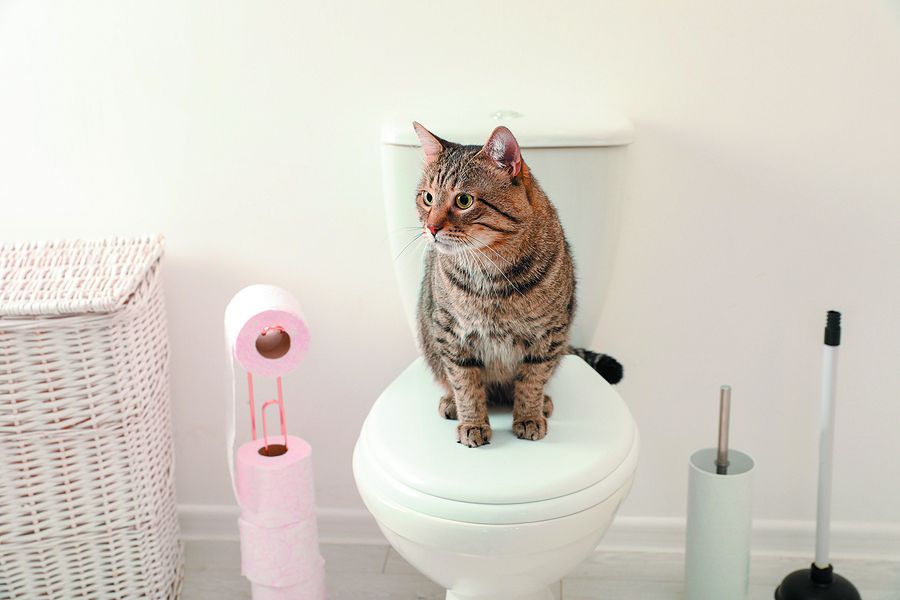The Dangers of Flushing Cat Poop Down Your Toilet - Advice for Safer Handling
The Dangers of Flushing Cat Poop Down Your Toilet - Advice for Safer Handling
Blog Article
We've come across the article relating to How to Dispose of Cat Poop and Litter Without Plastic Bags directly below on the internet and reckoned it made good sense to talk about it with you on my blog.

Introduction
As cat owners, it's important to be mindful of how we take care of our feline close friends' waste. While it might appear convenient to purge feline poop down the toilet, this method can have destructive repercussions for both the atmosphere and human wellness.
Environmental Impact
Purging cat poop presents damaging virus and parasites into the supply of water, posing a significant risk to marine communities. These pollutants can adversely influence aquatic life and concession water top quality.
Wellness Risks
Along with environmental worries, purging feline waste can additionally position health dangers to humans. Pet cat feces might consist of Toxoplasma gondii, a parasite that can cause toxoplasmosis-- a possibly severe disease, specifically for expecting females and individuals with weakened immune systems.
Alternatives to Flushing
Fortunately, there are more secure and a lot more liable means to dispose of pet cat poop. Think about the adhering to choices:
1. Scoop and Dispose in Trash
One of the most usual method of throwing away feline poop is to scoop it right into a biodegradable bag and toss it in the trash. Make sure to use a dedicated litter inside story and take care of the waste immediately.
2. Use Biodegradable Litter
Choose naturally degradable cat clutter made from products such as corn or wheat. These litters are environmentally friendly and can be securely taken care of in the garbage.
3. Bury in the Yard
If you have a backyard, take into consideration burying feline waste in a designated location away from veggie yards and water resources. Be sure to dig deep adequate to avoid contamination of groundwater.
4. Set Up a Pet Waste Disposal System
Invest in an animal waste disposal system particularly designed for feline waste. These systems use enzymes to break down the waste, decreasing smell and environmental effect.
Verdict
Responsible pet dog ownership extends past giving food and shelter-- it likewise includes appropriate waste administration. By refraining from purging feline poop down the bathroom and opting for alternate disposal approaches, we can reduce our ecological impact and safeguard human wellness.
Why Can’t I Flush Cat Poop?
It Spreads a Parasite
Cats are frequently infected with a parasite called toxoplasma gondii. The parasite causes an infection called toxoplasmosis. It is usually harmless to cats. The parasite only uses cat poop as a host for its eggs. Otherwise, the cat’s immune system usually keeps the infection at low enough levels to maintain its own health. But it does not stop the develop of eggs. These eggs are tiny and surprisingly tough. They may survive for a year before they begin to grow. But that’s the problem.
Our wastewater system is not designed to deal with toxoplasmosis eggs. Instead, most eggs will flush from your toilet into sewers and wastewater management plants. After the sewage is treated for many other harmful things in it, it is typically released into local rivers, lakes, or oceans. Here, the toxoplasmosis eggs can find new hosts, including starfish, crabs, otters, and many other wildlife. For many, this is a significant risk to their health. Toxoplasmosis can also end up infecting water sources that are important for agriculture, which means our deer, pigs, and sheep can get infected too.
Is There Risk to Humans?
There can be a risk to human life from flushing cat poop down the toilet. If you do so, the parasites from your cat’s poop can end up in shellfish, game animals, or livestock. If this meat is then served raw or undercooked, the people who eat it can get sick.
In fact, according to the CDC, 40 million people in the United States are infected with toxoplasma gondii. They get it from exposure to infected seafood, or from some kind of cat poop contamination, like drinking from a stream that is contaminated or touching anything that has come into contact with cat poop. That includes just cleaning a cat litter box.
Most people who get infected with these parasites will not develop any symptoms. However, for pregnant women or for those with compromised immune systems, the parasite can cause severe health problems.
How to Handle Cat Poop
The best way to handle cat poop is actually to clean the box more often. The eggs that the parasite sheds will not become active until one to five days after the cat poops. That means that if you clean daily, you’re much less likely to come into direct contact with infectious eggs.
That said, always dispose of cat poop in the garbage and not down the toilet. Wash your hands before and after you clean the litter box, and bring the bag of poop right outside to your garbage bins.
https://trenchlesssolutionsusa.com/why-cant-i-flush-cat-poop/
Do you really like reading about Can You Flush Cat Poo or Litter Down the Toilet?? Try leaving a comment down the page. We would be delighted to hear your thinking about this posting. Hoping that you visit us again later on. Liked our piece? Please share it. Help somebody else locate it. Thank you for your time. Come back soon.
Click Here Report this page